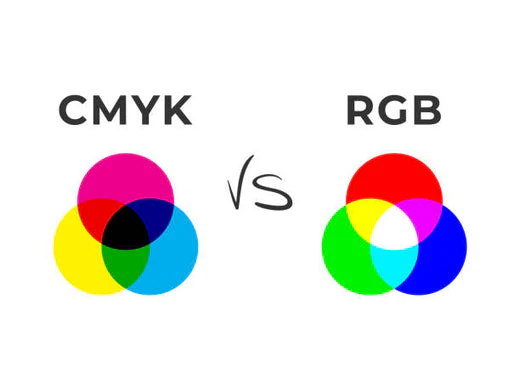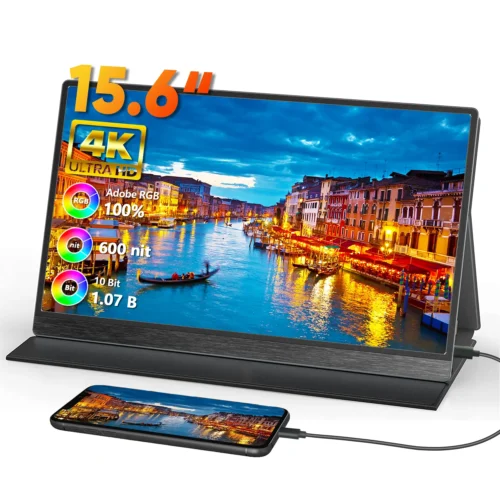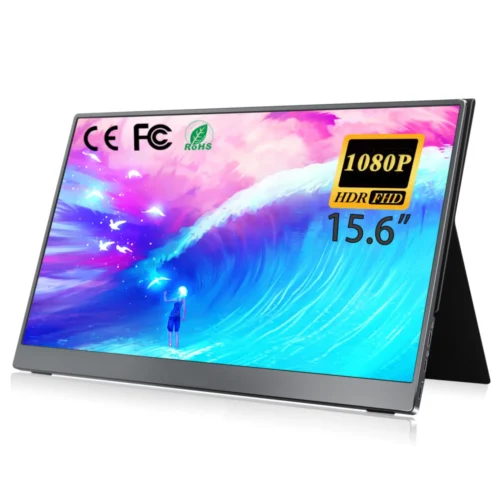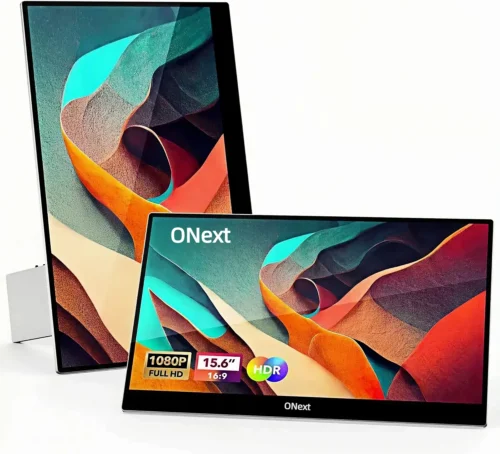In this blog, we’ll unpack everything you need to know about RGB and CMYK, from their core differences to practical conversion tips. By the end, you’ll be equipped to create stunning visuals on your laptop expandable screen or multiple laptop screens—and ensure they look just as good in print. Let’s dive in!
Table of Contents
- What Are RGB and CMYK?
- When to Use RGB and CMYK?
- RGB vs CMYK: A Head-to-Head Comparison
- How to Convert RGB to CMYK (Step-by-Step Guide)
- Converting Using Design Software
- Converting RGB to CMYK Online
- Troubleshooting Tips
- Colors Appear Dull
- Unexpected Color Shifts
- Excessive Ink Coverage
- Conclusion
- FAQ
- What is the difference between RGB and CMYK?
- Can you convert RGB to CMYK without losing color quality?
- What software is best for RGB to CMYK conversion?
1. What Are RGB and CMYK?
Imagine you’re working on a laptop expandable screen, tweaking a design for a client presentation. The colors pop—vibrant reds, deep blues, and glowing yellows. That’s RGB at work. RGB stands for Red, Green, Blue, a color model based on light. It’s how your laptop screen (and every digital display) creates colors by blending these three hues. The more light you add, the closer you get to white. It’s perfect for anything you see on your multiple laptop screens—websites, videos, or digital mockups.
Now, picture sending that same design to a printer. You hit “print,” and the colors come out muted or completely off. That’s because printers use CMYK—Cyan, Magenta, Yellow, and Key (Black). Unlike RGB, CMYK is a subtractive model based on ink. The more ink you layer, the darker the color gets, until you hit black. It’s the standard for anything tangible, like flyers, posters, or product packaging.
Why does this matter for laptop expandable screens? These devices often serve as creative hubs for designers and marketers. Understanding RGB and CMYK ensures your work shines both on-screen and off, no matter how many screens you’re juggling.

2. When to Use RGB and CMYK?
Timing is everything. Use RGB when you’re designing for digital platforms—think websites, social media graphics, or presentations viewed on a laptop expandable screen. Its wider color gamut (the range of colors it can produce) makes it ideal for the luminous displays of modern laptops. If you’re multitasking across multiple laptop screens, RGB keeps your workflow consistent and vivid.
Switch to CMYK when your project is destined for print. Whether it’s a brochure or a business card, CMYK aligns with how printers mix ink. Here’s a pro tip: if you’re previewing a print project on your laptop expandable screen, convert to CMYK early to avoid surprises later. Trust me, I’ve seen too many designers cry over a neon green that turned swampy in print!
RGB vs CMYK

What are the differences betweent RGB and CMYK? We’ve put together the following table to make it easier for everyone to understand the differences between them.
| Attribute | RGB Mode | CMYK Mode |
| Meaning | Red, Green, Blue | Cyan, Magenta, Yellow, Black |
| Use Cases | Digital screens (websites, phones, TVs) | Print materials (posters, flyers, business cards) |
| Color Mode | Additive mixing | Subtractive mixing |
| Color Result | Mix to create white | Mix to create black |
| Color Range | 16.7 million color possibilities | 16K color possibilities |
| Appearance | Brighter, more vibrant colors | Darker, muted colors |
| Tools | Screens | Printers |
| Devices | Computers, Phones, TVs | Inkjet, Offset printing |
| File Sizes | Smaller file sizes | Larger file sizes |
| File Formats | PNG, JPEG, GIF, SVG, PSD, BMP | PDF, EPS, AI, PSD, TIFF |
| Best For | Digital design, websites, apps, photography | Print design, advertising, publications |
3. RGB vs CMYK: A Head-to-Head Comparison
Let’s break it down:
- Color Creation: RGB adds light; CMYK subtracts it. On your multiple laptop screens, RGB can display brighter, more saturated colors than CMYK can replicate in ink.
- Gamut: RGB’s range is broader—think electric purples and fiery oranges. CMYK’s gamut is narrower, so some RGB colors simply don’t exist in print.
- File Use: RGB is lighter on file size, perfect for digital uploads. CMYK files are heavier but printer-ready.
- Tools: Design software like Adobe Photoshop (a must for laptop expandable screen users) supports both, but your output dictates the mode.
For example, if you’re mocking up a website on one screen and a print ad on another using multiple laptop screens, RGB suits the former, while CMYK fits the latter. Knowing this saves time and headaches.
4. How to Convert RGB to CMYK (Step-by-Step Guide)
Converting RGB to CMYK doesn’t have to be a mystery. Here’s how to do it seamlessly, whether you’re a design pro or a newbie.
Converting Using Design Software
- Open Your File: Launch Adobe Photoshop or Illustrator on your laptop expandable screen. These tools are gold standards for color management.
- Check the Mode: Go to “Image” > “Mode” (Photoshop) or “File” > “Document Color Mode” (Illustrator). If it’s RGB, you’re ready to switch.
- Convert: Select “CMYK Color.” The software recalculates the colors based on ink values.
- Adjust: Some colors may shift—tweak them manually using the color picker to match your vision.
- Proof: Use the “View” > “Proof Colors” option to simulate how it’ll look in print.
Why use software? Precision. Your laptop expandable screen gives you a massive canvas to fine-tune details across multiple files.

Converting RGB to CMYK Online
No software? No problem. Try these steps:
- Find a Tool: Websites like RGBtoCMYK.org or Convertio are free and user-friendly.
- Upload: Drag your RGB file (JPEG, PNG, etc.) from your multiple laptop screens setup.
- Convert: Hit the button and download the CMYK version.
- Review: Open it on your screen to check for shifts—online tools can be less accurate than software.
Online conversion is quick, but for professional work, stick to software for control.
5. Troubleshooting Tips
Conversions aren’t always smooth. Here’s how to fix common hiccups:
Colors Appear Dull
- Why?: CMYK can’t match RGB’s vibrancy. That neon pink? It’s gone.
- Fix: Boost saturation before converting, or pick CMYK-safe colors from the start (think Pantone swatches).
Unexpected Color Shifts
- Why?: Out-of-gamut colors get “mapped” to the closest CMYK match.
- Fix: Use your laptop expandable screen to preview in CMYK mode early. Adjust hues manually if needed.
Excessive Ink Coverage
- Why?: Too much ink (e.g., rich blacks) can smear or cost more to print.
- Fix: Cap total ink at 300% in software—check the “Info” panel in Photoshop.
These tips ensure your designs look stellar, whether displayed on multiple laptop screens or printed for a pitch.
6. Conclusion
Mastering RGB and CMYK is a game-changer for anyone using laptop expandable screens or multiple laptop screens. These tools empower you to create, edit, and multitask like never before—but only if your colors align with your goals. RGB keeps your digital work radiant; CMYK ensures your prints hold up. With the right conversion know-how and troubleshooting tricks, you’ll bridge the gap between screen and paper effortlessly.
Ready to elevate your workflow? Invest in a laptop expandable screen for more real estate and pair it with these color skills. Your designs—and your clients—will thank you.
7. FAQ
Q1:What is the difference between RGB and CMYK?
RGB uses light for digital displays (like your laptop expandable screen), while CMYK uses ink for printing. RGB is brighter; CMYK is more limited.
Q2:Can you convert RGB to CMYK without losing color quality?
Not entirely—some RGB colors fall outside CMYK’s gamut. Start in CMYK or adjust post-conversion to minimize loss.
Q3:What software is best for RGB to CMYK conversion?
Adobe Photoshop and Illustrator reign supreme, especially on multiple laptop screens for multitasking. Free options like GIMP work too, but with less finesse.
ONext Hot Sale Products
15.6 Inch FHD 1080P Portable Displays USB C HDMI External Display for Laptop Second Monitor
15.6″ 4K External Display Travel Monitors Unleash Mobile Productivity With HDR And USB-C HDMI Connectivity
15.6” Ultra-Portable Smart Monitor With 1080P FHD Metal Shell HDR Display & Dual Speakers
ONext Portable Monitor for Laptop, Slim 15.6 Inch External Monitor with Adjustable kickStand



